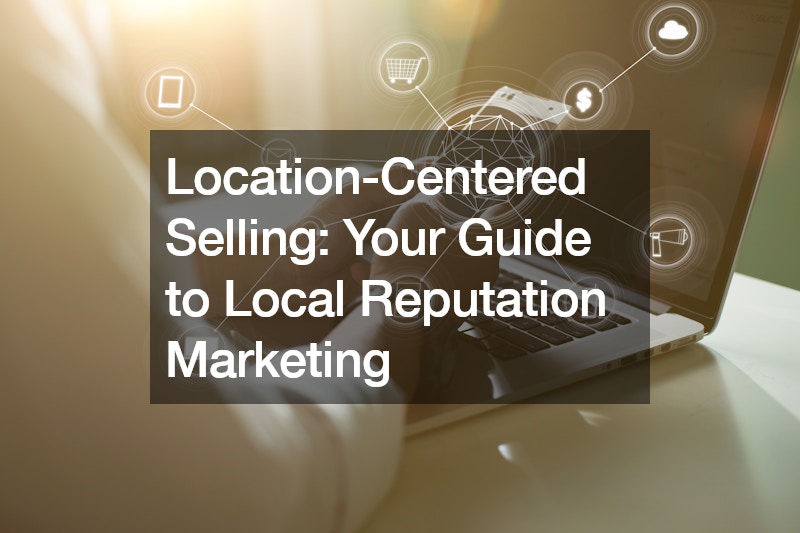
- Know your audience deeply — Understanding customer behavior and needs is the foundation of any successful sales strategy.
- Build long-term relationships — Loyal customers are more profitable than one-time buyers, so focus on trust, retention, and engagement.
- Leverage digital tools and data — Use SEO, analytics, and automation to reach more customers and make smarter business decisions.
- Train and empower your sales team — A knowledgeable, motivated team directly impacts your conversion rates and customer satisfaction.
- Refine your product, pricing, and value — Continuously improve what you offer and clearly communicate why it’s worth the price.
- Adopt technology to scale — Automate repetitive processes and enhance customer experience using modern digital solutions.
- Focus on sustainable growth — Consistency, innovation, and adaptability are key to maintaining long-term sales success.
In today’s fast-paced and competitive marketplace, increasing sales is more than just a goal—it’s a necessity for survival and growth. Whether you’re running a small startup or managing an established enterprise, understanding how to increase sales effectively requires strategy, data, and an unwavering focus on your customers. Entrepreneurs often face challenges like evolving consumer behavior, rising marketing costs, and intense competition, all of which demand innovative sales strategies that go beyond traditional methods.
This guide explores 10 proven strategies that work for any business size, regardless of industry. From leveraging digital tools and refining customer relationships to improving your brand message and pricing approach, you’ll learn practical, evidence-based techniques that help generate more revenue and long-term success.
1. Understand Your Target Market
Before you can increase sales, you must first understand who your customers are, what they need, and how they make purchasing decisions. Many entrepreneurs make the mistake of trying to sell to everyone—when, in reality, sales success lies in focusing on the right audience.
A well-defined target market allows you to tailor your products, pricing, and marketing strategies to match your customers’ expectations. You can identify your target market by conducting market research, analyzing demographic data, and understanding your existing customer base.
To better define your target market, follow these steps:
- Create customer personas: Identify age, location, job, income level, and lifestyle preferences.
- Study buying behavior: Track what drives them to purchase and when they are most likely to buy.
- Monitor online activity: Use analytics tools to see which channels (social media, email, website) attract the most engagement.
- Listen to feedback: Conduct surveys or read reviews to understand customer pain points.
When you truly know your audience, you can craft offers and campaigns that speak directly to their needs—making it far easier to increase sales across the board.
2. Build Strong Customer Relationships
Successful businesses aren’t built on one-time transactions—they’re built on relationships. Building trust and loyalty with customers encourages repeat business, referrals, and long-term revenue growth.
Customers are more likely to buy from brands that understand them, listen to them, and reward their loyalty. Entrepreneurs should make relationship-building a key part of their sales strategy by prioritizing communication, transparency, and personalized experiences.
Ways to build lasting customer relationships include:
- Follow up after purchases: Send thank-you notes or satisfaction surveys.
- Offer loyalty programs: Reward repeat customers with discounts or exclusive perks.
- Be responsive: Quickly address complaints and questions on all communication channels.
- Show authenticity: Share your brand’s story and mission to build an emotional connection.
- Provide consistent quality: Reliability in service and products is the foundation of trust.
In the long run, investing in customer relationships often yields a higher return than focusing solely on new customer acquisition.
3. Leverage Digital Marketing Tools

In the digital age, increasing sales requires more than just good products—it requires visibility. Entrepreneurs who understand digital marketing can reach larger audiences and convert leads more efficiently.
Digital marketing tools such as Google Ads, social media platforms, and email automation systems give businesses powerful ways to connect with potential buyers. These tools provide measurable data and allow for continuous improvement of campaigns.
Here’s how you can use digital marketing tools effectively:
- Use SEO (Search Engine Optimization): Optimize your website for relevant keywords to attract organic traffic.
- Run targeted ads: Use demographic and behavioral targeting to reach the right audience.
- Leverage content marketing: Share valuable blogs, videos, and infographics to build authority.
- Automate email marketing: Send personalized offers or reminders based on customer activity.
- Track analytics: Use tools like Google Analytics or Meta Insights to measure campaign performance.
A strategic combination of these tools ensures your brand stays visible and relevant, directly impacting your ability to increase sales consistently.
4. Optimize Your Sales Funnel
Understanding your sales funnel—the customer’s journey from awareness to purchase—is critical to identifying where potential buyers drop off and how to guide them toward conversion.
A well-structured sales funnel helps entrepreneurs turn interest into revenue by ensuring that every touchpoint moves the customer closer to buying. Optimizing this process often requires analyzing customer behavior at each stage and improving weak points in your funnel.
Steps to optimize your sales funnel:
- Map the customer journey: Identify stages from awareness, interest, and consideration to conversion.
- Create engaging content: Use blogs, guides, and videos to nurture interest at the top of the funnel.
- Simplify checkout processes: Reduce friction by offering one-click payment or guest checkout.
- Implement retargeting: Bring back visitors who abandoned carts through targeted ads or emails.
- Measure and adjust: Use analytics to test conversion rates and refine strategies.
An optimized sales funnel not only improves sales but also enhances customer satisfaction by making the buying process seamless and enjoyable.
5. Improve Your Product or Service Offering
No sales strategy can succeed if your product or service doesn’t meet customer expectations. Continually improving what you sell ensures your offerings stay competitive and desirable.
Entrepreneurs must be proactive in gathering feedback and staying informed about market trends. A small upgrade, new feature, or added benefit can often make a big difference in conversion rates and customer retention.
Key ways to enhance your offerings include:
- Gather customer feedback: Use surveys and reviews to identify improvement areas.
- Benchmark against competitors: Understand what others in your industry offer and find ways to exceed them.
- Add complementary services: Bundle products or offer extended warranties to increase value.
- Focus on quality: Consistent excellence builds reputation and justifies premium pricing.
- Innovate: Stay ahead of the curve by adapting to new technologies or changing preferences.
Improving your product or service isn’t just about staying relevant—it’s about showing customers you care about delivering the best possible value.
6. Train and Empower Your Sales Team
Your sales team is the backbone of your business growth. A well-trained, motivated, and customer-focused sales team can make all the difference in achieving revenue goals.
Entrepreneurs should invest in professional development to ensure their teams have the latest knowledge, communication skills, and selling techniques. Empowering salespeople with the right tools and incentives creates a motivated environment where performance thrives.
Effective ways to train and motivate your sales team:
- Provide ongoing training: Focus on product knowledge, objection handling, and negotiation.
- Set clear goals: Define measurable targets and celebrate small wins.
- Incentivize success: Offer performance-based bonuses or recognition programs.
- Encourage collaboration: Share best practices across departments.
- Use CRM systems: Track performance and customer interactions in one place.
By empowering your team, you’re not only increasing their productivity but also improving the customer experience, which directly contributes to increased sales.
7. Use Data to Drive Decisions
Data is one of the most valuable resources for entrepreneurs looking to increase sales. It reveals insights into customer preferences, campaign performance, and market trends that can shape better business decisions.
Instead of relying on intuition alone, successful businesses use data analytics to refine pricing, marketing strategies, and product development.
Ways to make data-driven sales decisions:
- Analyze purchasing patterns: Identify top-selling products and customer demographics.
- Measure marketing ROI: See which campaigns bring in the most conversions.
- Segment customers: Personalize offers based on age, location, or purchase history.
- Use predictive analytics: Anticipate future buying behavior and demand.
- Track website metrics: Monitor bounce rates, click-throughs, and conversions.
When you base your sales strategy on solid data, you can make smarter, faster, and more profitable decisions that lead to sustained growth.
8. How Do You Increase Sales with Customer Retention Strategies?
Acquiring new customers is often more expensive than retaining existing ones. That’s why focusing on customer retention is one of the most effective ways to increase sales. Loyal customers not only buy more often but also become brand advocates who help attract new clients.
Entrepreneurs should view customer retention as a long-term investment rather than a short-term tactic. Building loyalty involves consistent engagement, excellent service, and genuine appreciation for customer support.
Powerful retention strategies include:
- Offer loyalty or referral programs: Reward customers who bring in new business.
- Regularly communicate: Send updates, exclusive offers, and useful information.
- Ask for feedback: Show customers that their opinions help shape your business.
- Provide exceptional after-sales support: Be proactive in solving issues.
- Personalize experiences: Tailor recommendations or promotions based on past purchases.
By nurturing relationships with your existing customers, you create a foundation of trust and advocacy that naturally boosts your sales figures.
9. Refine Your Pricing and Value Proposition
Pricing can make or break a sale. Setting the right price isn’t just about covering costs—it’s about conveying value. Entrepreneurs must understand their market positioning and customer perception to find the perfect balance between profitability and affordability.
A strong value proposition—the clear statement of why customers should choose your product—works hand in hand with pricing. When people understand what makes your offering better or unique, they’re more likely to pay your price.
Here’s how to refine pricing and value strategies:
- Conduct competitive analysis: Know where your price stands in the market.
- Test different models: Experiment with tiered pricing or subscription options.
- Highlight value: Emphasize benefits, not just features, in marketing materials.
- Bundle products: Offer packages that enhance perceived value.
- Avoid constant discounts: Instead, focus on quality and experience.
Smart pricing communicates confidence, while a compelling value proposition convinces customers that your brand delivers more for their money.
10. Embrace Technology and Automation

Modern technology has revolutionized how businesses sell, communicate, and manage customer relationships. Automation tools can help entrepreneurs save time, reduce costs, and scale their operations without compromising quality.
From AI-powered chatbots to automated CRM systems, technology enables businesses to provide better customer service and make smarter sales decisions faster.
Ways to use technology to increase sales:
- Automate repetitive tasks: Use tools to handle follow-ups, scheduling, and invoicing.
- Adopt CRM platforms: Manage leads, track performance, and personalize communication.
- Use AI for lead scoring: Identify high-value prospects automatically.
- Enhance customer experience: Implement chatbots or self-service portals.
- Leverage e-commerce analytics: Optimize product listings and improve conversion rates.
By integrating the right technology, entrepreneurs can stay agile, efficient, and competitive in an ever-changing market.
Final Thoughts: Building a Sustainable Sales Growth Mindset
Increasing sales isn’t just about short-term tactics—it’s about building a sustainable, customer-focused mindset. Entrepreneurs must balance innovation, strategy, and empathy to achieve long-term success. Every strategy, from improving your product to nurturing your customer relationships, contributes to creating a sales engine that grows consistently.
To summarize the key points:
- Understand your customers deeply and focus on solving their real problems.
- Build loyalty by offering value and maintaining relationships.
- Leverage data and technology to make smarter decisions.
- Continuously train your team and refine your approach.
Sales growth is a journey that requires patience, consistency, and adaptability. With these 10 proven strategies, entrepreneurs can strengthen their foundations, stay competitive, and achieve measurable success regardless of their business size.



